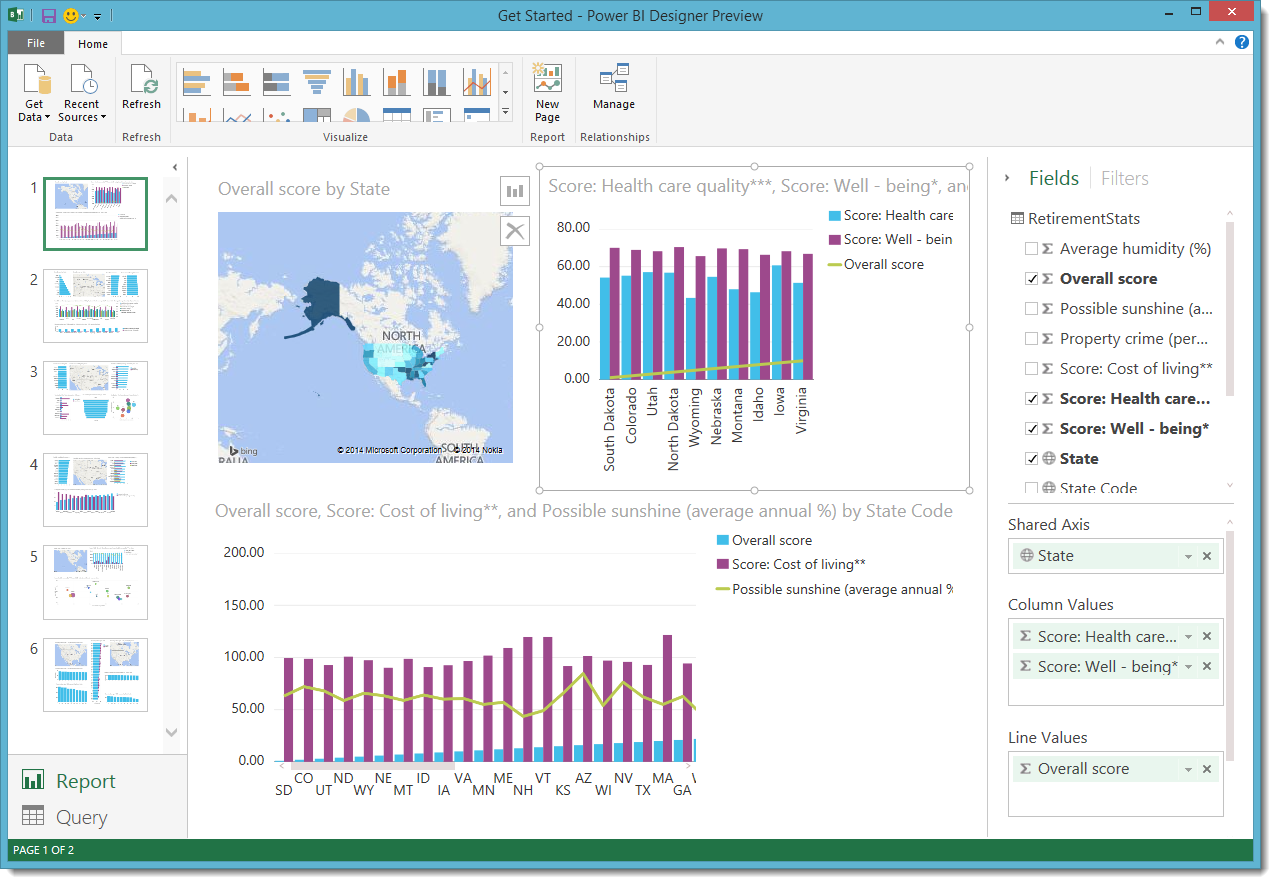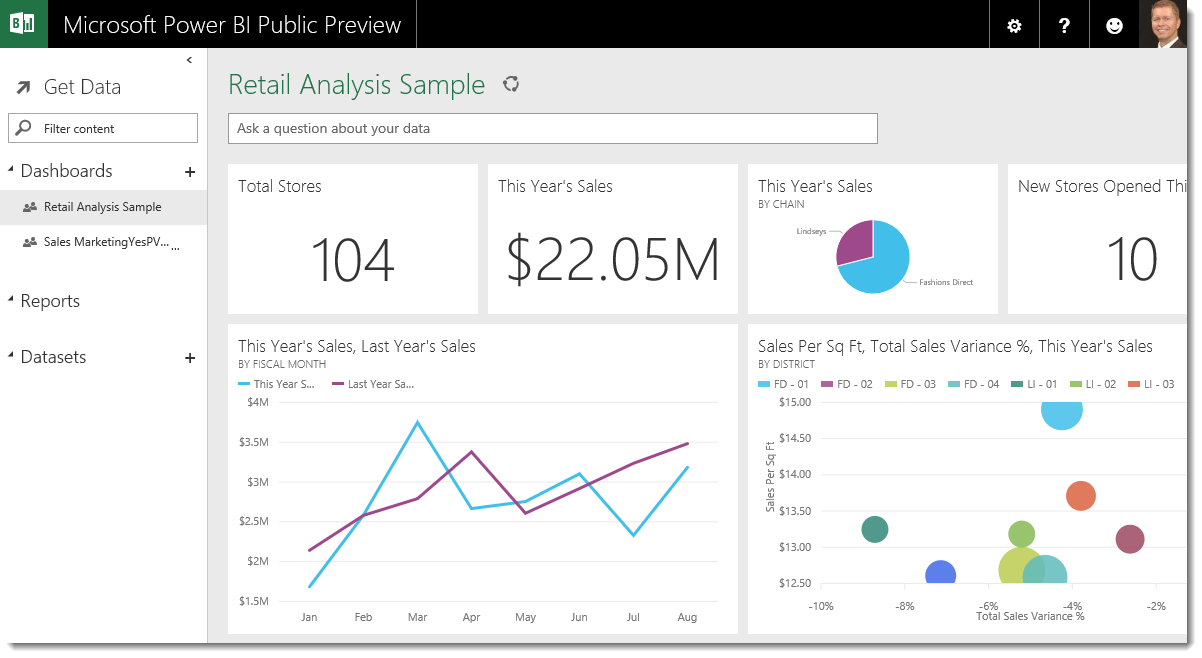|
First article from a series on [ #Office365 ] Power BI 2.0 :
|
|
Power BI was first introduced at WPC (Worldwide Partner Conference) in July 2013. It has been a demonstrated game changer in the BI space with several key features:
- Cloud service for publishing (based on SharePoint in Office 365 hence the name Power BI for Office 365 that is used as a title for the first version of this offering, and including Q&A, a service allowing to query your data in just the natural language) connected with
- On-premises tools (most of them being Excel add-ins, like Power View, for advanced visualizations, Power Map extending Power View for 3D Map vizualisations, Power Query, to get and structure data sets )
- Leveraging in-memory data modeling for large datasets (with Power Pivot)
- Without forgetting, Data Management Gateway which allows to connect internal data to the previous Cloud Services, in a typical hybrid way.
For a complete description of this current offering, you can go on Power BI – Getting Started Guide.
Here is how Microsoft positions itself this offering (versus previous BI tools waves)
In March 2015, a new version (or experience) of Power BI was introduced (it is sometimes called the new experience, I call it Power BI V2 to remove any ambiguïty [Update] They call it Power BI 2.0) with an identical objective :
- leveraging Cloud services to give access to BI to everybody
but with some key differences in the architecture:
- No more Excel add-ins (because it has proven to be hard to evolve), so a new dedicated tool was created Power Bi Designer. They are committed to evolve this tool every month!

- No more SharePoint integration, so reports and dashboards are now accessible via an online service, accessible at http://powerbi.com/ where you can also get new datasets, create reports, dashboards and publish them:

- Integration of the modules that where previously clearly identified. For exemple:
- Power BI Designer includes Power Query, Power View, Power Pivot
- Power BI the site, relies also on Power View and Power Pivot and integrate Q & A
- New Mobile apps for Windows store, Apple Store.
So the approach is clearly simplified. Here is a typical process using Power BI :
[Updated on 2015-07-12 ] ________________________________________________________________________________________________
2 days ago the Power BI Team made the following announcements on its blog:
- Power BI 2.0 (as they call it now) will be generally available on July 24th 2015.
- This supersedes the Power BI for Office 365 service (“Power BI 1.0”), which we will continue to operate during a transition period as users migrate to the updated service.
- Power BI Designer has been renamed Power BI Desktop
- it will include several enhancements like : new data visualizations, new visualization formatting, new data sources, and direct connection to SQL Server Analysis Services tabular models
- Power BI web authoring tool will be upgraded accordingly
- Power BI Content Packs will be extended with
- new providers
- a new way to create Organizational Content Packs to share a model inside your organization
- Power BI will support Office 365 Groups
- Direct connectivity to Apache Spark (especially suited for Big Data scenario: Query performance over a Hadoop dataset can be 100 times faster with Spark)
- A Power BI mobile app for Android is available right now, adding to the existing mobile support for iPhone, iPad, and Windows devices.
So here is my summary of the Power BI roadmap:
Sources







Pingback: Power BI 2.0 General Availability | Jan's Blog
Pingback: [ #Office365 ] Power BI 2.0, part 1: the big picture (updated with GA infos) | Blog on IT
Thats aterrific post,iam a going to follow this blog inthe future
LikeLike
Thanks!
LikeLike